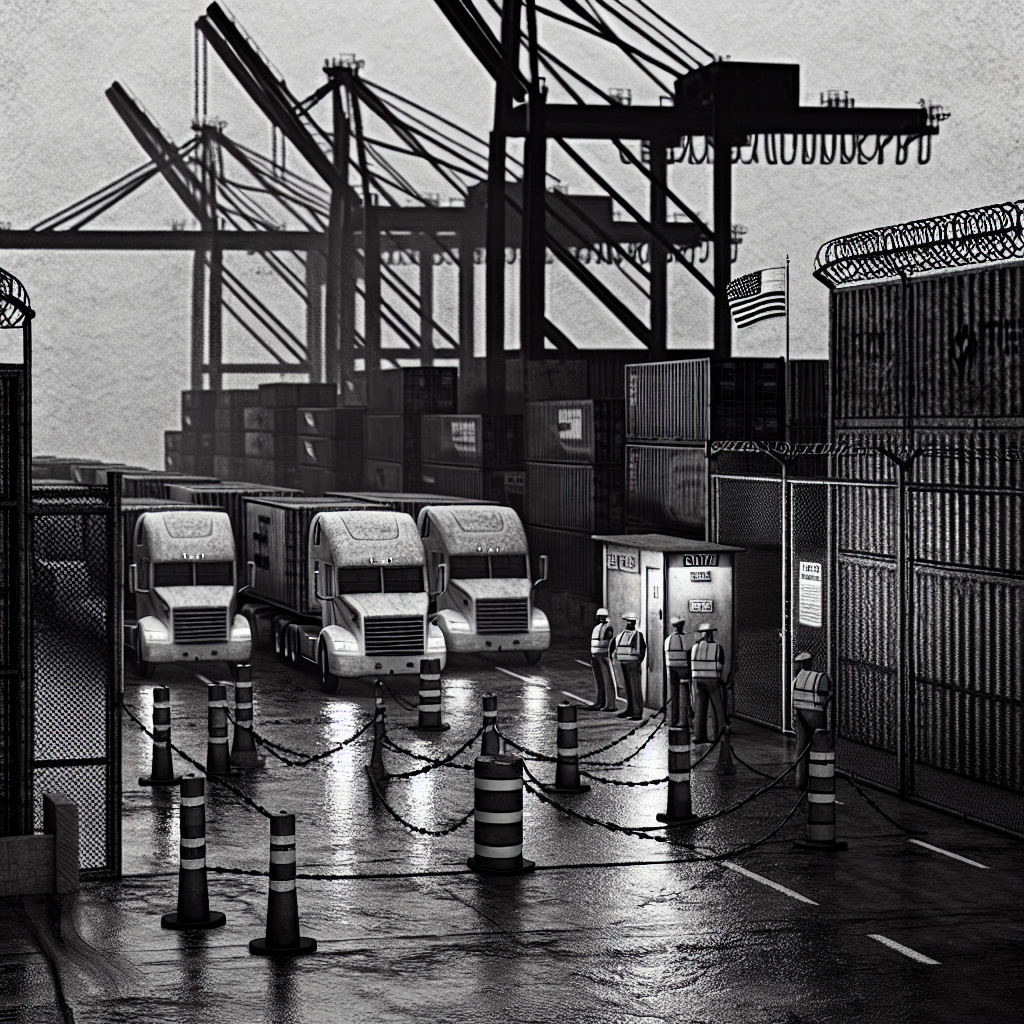US trade authorities have moved to dramatically raise the cost of China‑made ship‑to‑shore cranes and related cargo gear, a shift that could lift effective duty exposure on new equipment well above 200% once recent actions stack with existing measures. For motor carriers, the policy turn is more than a line on a tariff schedule: it threatens to slow port modernization, compress gate capacity and increase the likelihood of bunching, detention and longer turn times at major gateways.
The latest step came October 10, when the Office of the US Trade Representative (USTR) said it will impose a 100% tariff on specified ship‑to‑shore container cranes and some truck cargo‑handling equipment, and separately proposed surcharges of up to 150% on additional cargo‑handling equipment and parts. At the same time, USTR narrowed other elements of its shipbuilding action, setting a $46 per net ton fee for foreign‑built vehicle carriers and allowing deferrals of certain fee payments to December 10 while it reviews public comments. Notably, USTR said intermodal shipping containers will not be subject to new tariffs, avoiding a shock to box prices and availability.
That announcement landed amid a broader escalation: on October 10 the White House said a new, across‑the‑board 100% tariff on Chinese imports would begin November 1 “or sooner,” depending on Beijing’s actions. If implemented, that blanket duty would sit on top of existing China tariffs and the new crane‑specific tariff—raising landed costs for replacement port equipment and spare parts even further.
China signaled it will answer in kind. Beginning October 14, Beijing will levy new port fees on US‑owned, US‑flag or US‑built vessels calling Chinese ports, mirroring US fees that start the same day for China‑linked ships. A tit‑for‑tat over vessel fees won’t change how many containers a crane can lift, but it can change where carriers send ships—and when those ships arrive—adding another variable to yard planning and drayage scheduling on both sides of the Pacific.
Why it matters for trucking: crane procurement is the long pole in the tent for terminal productivity. When operators delay or re‑spec orders to navigate tariff exposure, berth upgrades slip to the right. Fewer or later‑arriving high‑reach cranes means slower ship work during big calls, which in turn compresses export/import release windows and reduces the number of viable appointment slots per shift. That is where carriers feel it: more queueing outside gates, higher out‑of‑route miles to chase chassis, and greater risk that a two‑turn day becomes one.
The equipment mix also matters. USTR’s plan explicitly targets certain truck cargo‑handling equipment and parts—items like yard gear that terminals use to move boxes to drays. Terminals facing steeper parts bills may stretch maintenance intervals or cannibalize fleets, creating intermittent capacity shortfalls that ripple directly to turn times. At the same time, the decision not to add tariffs on intermodal containers averts an immediate increase in the price of replacement boxes and helps keep chassis‑box cycles from getting even tighter this fall.
Near‑term operating picture: expect timing whiplash. The prospect of a November 1 blanket tariff creates a classic “pull‑forward then air‑pocket” pattern as cargo owners try to beat the clock, followed by a lull as orders reset under the new cost structure. Ports will try to smooth this with night gates and extra labor, but carriers should plan for uneven day‑to‑day volumes and cluster arrivals through late October.
Key dates and what to watch next:
– October 14: US fees kick in for foreign‑built vehicle carriers; China’s retaliatory port fees on US‑linked ships start the same day. Watch for service changes that could shift call patterns at Gulf and East Coast auto and container terminals.
– Through December 10: Some service fees may be deferred while USTR takes comments on the proposed additional tariffs (including up to 150% on certain cargo‑handling equipment and parts). Track which HTS lines make the final list; those details will determine which terminal maintenance budgets get hit—and where trucking feels it first.
– November 1: Target date for a new 100% tariff on all Chinese imports unless policy shifts. Expect another round of front‑loading if the effective date holds.
What carriers can do now:
– Build slack into appointment windows for the next three weeks and coordinate early with dispatch about double‑moves versus singles to reduce empty miles during gate crunches.
– Ask BCOs and 3PLs about terminal handling charge (THC) adjustments; if THCs rise, detention and free‑time practices often change too—knowing those changes in advance can prevent costly surprises.
– Keep an eye on terminal advisories for any maintenance outages tied to parts availability; those are early tells for gate slowdowns that won’t show up in port‑wide averages until after congestion sets in.
Bottom line: the policy trend line is clear—Washington is putting a high tariff wall around critical port equipment, and Beijing is answering. The immediate relief on container boxes is welcome, but the combination of 100% crane duties, proposed surcharges on cargo‑handling gear and the prospect of a sweeping 100% tariff overlay means port upgrades will cost more and take longer. Truckers should plan on choppier gate flows and more volatile day‑to‑day volumes as the new regime takes hold.
Sources: FreightWaves, United States Trade Representative, Reuters, Associated Press
This article was prepared exclusively for TruckStopInsider.com. Republishing is permitted only with proper credit and a link back to the original source.





